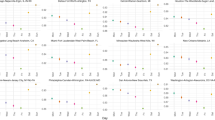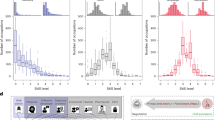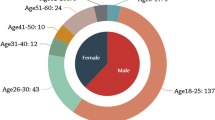Abstract
The occupational specialization of social groups is closely tied to gender, racial and class identities, segmenting the labour market into perceived White/Black and male/female roles and skill sets. Using data from 100 million formal workers in Brazil (2003–2019), we examine patterns of occupational segmentation across 426 occupations, identifying distinct skill demands and socio-economic statuses linked to race/skin colour and gender. Classifications of ‘male’ or ‘female’ occupations are shaped by required skills, whereas distinctions between ‘White’ and ‘Black’ occupations reflect socio-economic status and historical inequalities. Women and men are segmented by gender-associated skill sets, such as engineering versus caregiving skills. Within these skill sets, strong hierarchical segregation persists, with Black individuals disproportionately concentrated in positions of lower socio-economic status. Despite recent socio-economic changes, occupational specialization patterns have remained stable. Our findings highlight that the strong association between race and lower-status occupations must be addressed for a more inclusive society.
This is a preview of subscription content, access via your institution
Access options
Access Nature and 54 other Nature Portfolio journals
Get Nature+, our best-value online-access subscription
$32.99 / 30 days
cancel any time
Subscribe to this journal
Receive 12 digital issues and online access to articles
$119.00 per year
only $9.92 per issue
Buy this article
- Purchase on SpringerLink
- Instant access to full article PDF
Prices may be subject to local taxes which are calculated during checkout





Similar content being viewed by others
Data availability
RAIS data are available from the Brazilian Ministry of Labor and Employment portal (https://www.gov.br/trabalho-e-emprego/pt-br/assuntos/estatisticas-trabalho/microdados-rais-e-caged). Census data are available from the Brazilian Institute of Geography and Statistics (IBGE) portal (https://www.ibge.gov.br/estatisticas/multidominio/cultura-recreacao-e-esporte/9662-censo-demografico-2010.html?=&t=microdados). Both RAIS and Census data are freely available for unrestricted use without licensing, patenting or control mechanisms, as explicitly stated on the government’s open data policy page at https://www.gov.br/trabalho-e-emprego/pt-br/acesso-a-informacao/dados-abertos. ESCO Skills-Occupation Matrix Tables are available at https://esco.ec.europa.eu/en/publication/skills-occupations-matrix-tables. The official titles and hierarchical structure of ISCO-08 occupation groups are available from the International Labour Organization’s ILOSTAT portal at https://ilostat.ilo.org/methods/concepts-and-definitions/classification-occupation/. The datasets necessary for reproducing the findings presented in this Article and Supplementary Information are available at https://doi.org/10.6084/m9.figshare.27184176 (ref. 53).
Code availability
All the code necessary to reproduce the results presented in this paper and Supplementary Information can be downloaded at https://doi.org/10.6084/m9.figshare.27184176 (ref. 53).
References
Neffke, F. M. H. The value of complementary co-workers. Sci. Adv. 5, eaax3370 (2019).
Neffke, F. & Henning, M. Skill relatedness and firm diversification. Strateg. Manag. J. 34, 297–316 (2012).
Alabdulkareem, A. et al. Unpacking the polarization of workplace skills. Sci. Adv. 4, eaao6030 (2018).
Moro, E. et al. Universal resilience patterns in labor markets. Nat. Commun. 12, 1972 (2021).
Frank, M. R. et al. Network constraints on worker mobility. Nat. Cities 1, 94–104 (2024).
Frank, M. R. et al. Toward understanding the impact of artificial intelligence on labor. Proc. Natl Acad. Sci. USA 116, 6531–6539 (2019).
Boschma, R. Relatedness as driver of regional diversification: a research agenda. Reg. Stud. 51, 351–364 (2016).
Neffke, F., Henning, M. & Boschma, R. How do regions diversify over time? Industry relatedness and the development of new growth paths in regions. Econ. Geogr. 87, 237–265 (2011).
Smith, A. in The Glasgow Edition of the Works and Correspondence of Adam Smith Vol. 2 (ed. Todd, W. B.) Ch. 1 (Oxford Univ. Press, 1776); https://doi.org/10.1093/oseo/instance.00043218
Reich, M., Gordon, D. M. & Edwards, R. C. A theory of labor market segmentation. Am. Econ. Rev. 63, 359–365 (1973).
Grusky, D. Social Stratification, Class, Race, and Gender in Sociological Perspective 2nd edn (Routledge, 2019); https://doi.org/10.4324/9780429306419
Freeman, L. C. Segregation in social networks. Sociol. Methods Res. 6, 411–429 (1978).
Blackburn, R. M., Brooks, B. & Jarman, J. The vertical dimension of occupational segregation. Work Employ. Soc. 15, 511–538 (2001).
Dong, X. et al. Segregated interactions in urban and online space. EPJ Data Sci. 9, 20 (2020).
Boterman, W. R. & Musterd, S. Cocooning urban life: exposure to diversity in neighbourhoods, workplaces and transport. Cities 59, 139–147 (2016).
Wang, Q., Phillips, N. E., Small, M. L. & Sampson, R. J. Urban mobility and neighborhood isolation in America’s 50 largest cities. Proc. Natl Acad. Sci. USA 115, 7735–7740 (2018).
Moro, E., Calacci, D., Dong, X. & Pentland, A. Mobility patterns are associated with experienced income segregation in large US cities. Nat. Commun. 12, 4633 (2021).
Gonzalez, L. Por Um Feminismo Afro-Latino-Americano (Editora Schwarcz-Companhia das Letras, 2020).
Collins, P. H. Intersectionality as Critical Social Theory (Duke Univ. Press, 2019); https://doi.org/10.1215/9781478007098
Mandel, H. & Semyonov, M. Going back in time? Gender differences in trends and sources of the racial pay gap, 1970 to 2010. Am. Socio. Rev. 81, 1039–1068 (2016).
Wingfield, A. H. Racializing the glass escalator: reconsidering men’s experiences with women’s work. Gend. Soc. 23, 5–26 (2009).
Chetty, R., Hendren, N., Jones, M. R. & Porter, S. R. Race and economic opportunity in the United States: an intergenerational perspective. Q. J. Econ. 135, 711–783 (2019).
Hartmann, D., Jara Figueroa, C., Kaltenberg, M. & Gala, P. Mapping stratification: the industry-occupation space reveals the network structure of inequality. SSRN Electron. J. https://doi.org/10.2139/ssrn.3399239 (2019).
Ribeiro, R. & Araújo, G. S. Segregação ocupacional no mercado de trabalho segundo cor e nível de escolaridade no Brasil contemporâneo. Nova Econ. 26, 147–177 (2016).
Souza Silveira, L. & Siqueira Leão, N. Segregação ocupacional e diferenciais de renda por gênero e raça no Brasil: uma análise de grupos etários. Rev. Bras. Estud. Popul. 38, 1–22 (2021).
Paul, M., Zaw, K. & Darity, W. Returns in the labor market: a nuanced view of penalties at the intersection of race and gender in the US. Fem. Econ. 28, 1–31 (2022).
de Almeida, T. M. C. Interseccionalidade de violências, discriminações e resistências: as trabalhadoras terceirizadas da limpeza e conservação. Rev. do CEAM 4, 73–95 (2018).
Cortes, P. & Pan, J. in The Oxford Handbook of Women and the Economy (eds Averett, S. L. et al.) 424–452 (Oxford Academic, 2017); https://doi.org/10.1093/oxfordhb/9780190628963.013.12
European Commission: Directorate-General for Employment, Social Affairs and Inclusion, Verashchagina, A., & Bettio, F. Gender Segregation in the Labour Market: Root Causes, Implications and Policy Responses in the EU (Publications Office of the European Union, 2009).
Hegewisch, A. & Hartmann, H. Occupational Segregation and the Gender Wage Gap: A Job Half Done (Institute for Women’s Policy Research, 2014); https://hdl.handle.net/1813/79410
Ortiz, S. Y. & Roscigno, V. J. Discrimination, women, and work: processes and variations by race and class. Socio. Q 50, 336–359 (2009).
Browne, I. & Misra, J. The intersection of gender and race in the labor market. Annu. Rev. Socio. 29, 487–513 (2003).
Ridgeway, C. L. & Correll, S. J. Unpacking the gender system: a theoretical perspective on gender beliefs and social relations. Gend. Soc. 18, 510–531 (2004).
Cardoso, B.-H., Kaltenberg, M. & Hartmann, D. How skills-related local labor markets shape occupational upward mobility prospects. SSRN Electron. J. https://doi.org/10.2139/ssrn.4631303 (2023).
Ganzeboom, H. B. G. A new International Socio-Economic Index (ISEI) of occupational status for the International Standard Classification of Occupation 2008 (ISCO-08) constructed with data from the ISSP 2002–2007. In Annual Conference of International Social Survey Programme Vol. 1 (2010).
Ganzeboom, H. B. G., De Graaf, P. M. & Treiman, D. J. A standard international socio-economic index of occupational status. Soc. Sci. Res. 21, 1–56 (1992).
Reskin, B. Sex segregation in the workplace. Annu. Rev. Socio. 19, 241–270 (1993).
Elliott, J. R. & Smith, R. A. Race, gender, and workplace power. Am. Socio. Rev. 69, 365–386 (2004).
Wilson, G., Sakura-Lemessy, I. A. N. & West, J. P. Reaching the top: racial differences in mobility paths to upper-tier occupations. Work Occup. 26, 165–186 (1999).
Piasna, A. & Drahokoupil, J. Gender inequalities in the new world of work. Transfer 23, 313–332 (2017).
Rendall, M. Structural change in developing countries: has it decreased gender inequality? World Dev. 45, 1–16 (2013).
Kabeer, N. in Women’s Economic Empowerment (eds Grantham, K. et al.) 13–48 (Routledge, 2021).
Bertocchi, G. & Dimico, A. Slavery, education, and inequality. Eur. Econ. Rev. 70, 197–209 (2014).
Kelly, M. D. A. Racial inequality in the Anglophone Caribbean: comparing the cases of Jamaica and Trinidad and Tobago. J. Ethn. Migr. Stud. 49, 1125–1153 (2022).
Walz, T. & Cuno, K. M. Race and Slavery in the Middle East: Histories of Trans-Saharan Africans in Nineteenth-Century Egypt, Sudan, and the Ottoman Mediterranean (Oxford Univ. Press, 2010).
Weisshaar, K. & Cabello-Hutt, T. Labor force participation over the life course: the long-term effects of employment trajectories on wages and the gendered payoff to employment. Demography 57, 33–60 (2020).
Kaufman, R. L. Assessing alternative perspectives on race and sex employment segregation. Am. Socio. Rev. 67, 547–572 (2002).
Souza Silveira, L. & Siqueira Leão, N. O impacto da segregação ocupacional por gênero e raça na desigualdade de renda no Brasil em três décadas (1986–2015). Rev. Latinoam. Poblac. 14, 41–76 (2020).
Tomaskovic-Devey, D. et al. Documenting desegregation: segregation in American workplaces by race, ethnicity, and sex, 1966–2003. Am. Socio. Rev. 71, 565–588 (2006).
Weeden, K. A., Newhart, M. & Gelbgiser, D. Occupational Segregation. State of the Union: The Poverty and Inequality Report (Stanford Center on Poverty and Equality, 2018); https://inequality.stanford.edu/sites/default/files/Pathways_SOTU_2018.pdf
Guimarães, A. S. A. The Brazilian system of racial classification. Ethn. Racial Stud. 35, 1157–1162 (2012).
Francis-Tan, A. & Tannuri-Pianto, M. Inside the black box: affirmative action and the social construction of race in Brazil. Ethn. Racial Stud. 38, 2771–2790 (2015).
Pinheiro, F., Souza, L., Bohn, L., Hartmann, D. & Cardoso, B.-H. F. C. Unpacking gender and race segregation along occupational skills and socioeconomic status in Brazil. figshare https://doi.org/10.6084/m9.figshare.27184176 (2025).
Acknowledgements
B.-H.F.C. and L.S. are grateful for the financial support of the Coordenação de Aperfeiçoamento de Pessoal de Nível Superior (CAPES; finance code 001), and D.H. is grateful for the support from CNPq (406943/ 2021-4 and 315441/2021-6). B.-H.F.C. and D.H. thank the Ministry of Economics of Brazil for access to the 2003–2019 RAIS database (Processo SEI number 19965.106679/2021-1). F.L.P. acknowledges funding support from Fundação para a Ciência e a Tecnologia (FCT), under the project UIDB/04152, Centro de Investigação em Gestão de Informação (MagIC)/NOVA IMS. D.H. thanks C. Jara-Figueroa, M. Kaltenberg and C. Hidalgo for their insights on occupational networks in Brazil and the many fruitful discussions held at the MIT Media Lab in 2014–2016. All authors thank C. Scalon, E. Catela, G. Moura, K. de Souza Silva, participants at the SASE Rio conference 2023, and members of Necode-UFSC group meetings for valuable comments. The funders had no role in study design, data collection and analysis, decision to publish or preparation of the paper.
Author information
Authors and Affiliations
Contributions
B.-H.F.C., D.H., L.S., L.B. and F.L.P. conceived the study and designed the experiments. B.-H.F.C. performed the experiments and analysed the data. All authors participated in the writing and revision of the article.
Corresponding authors
Ethics declarations
Competing interests
The authors declare no competing interests.
Peer review
Peer review information
Nature Human Behaviour thanks Leonardo Souza Silveira and the other, anonymous, reviewer(s) for their contribution to the peer review of this work.
Additional information
Publisher’s note Springer Nature remains neutral with regard to jurisdictional claims in published maps and institutional affiliations.
Supplementary information
Supplementary Information
Supplementary Figs. 1–45 and Tables 1–23, organized into Sections 1–12.
Rights and permissions
Springer Nature or its licensor (e.g. a society or other partner) holds exclusive rights to this article under a publishing agreement with the author(s) or other rightsholder(s); author self-archiving of the accepted manuscript version of this article is solely governed by the terms of such publishing agreement and applicable law.
About this article
Cite this article
Cardoso, BH.F., Souza, L., Pinheiro, F.L. et al. Unpacking gender and race segregation along occupational skills and socio-economic status in Brazil. Nat Hum Behav (2025). https://doi.org/10.1038/s41562-025-02272-9
Received:
Accepted:
Published:
DOI: https://doi.org/10.1038/s41562-025-02272-9



